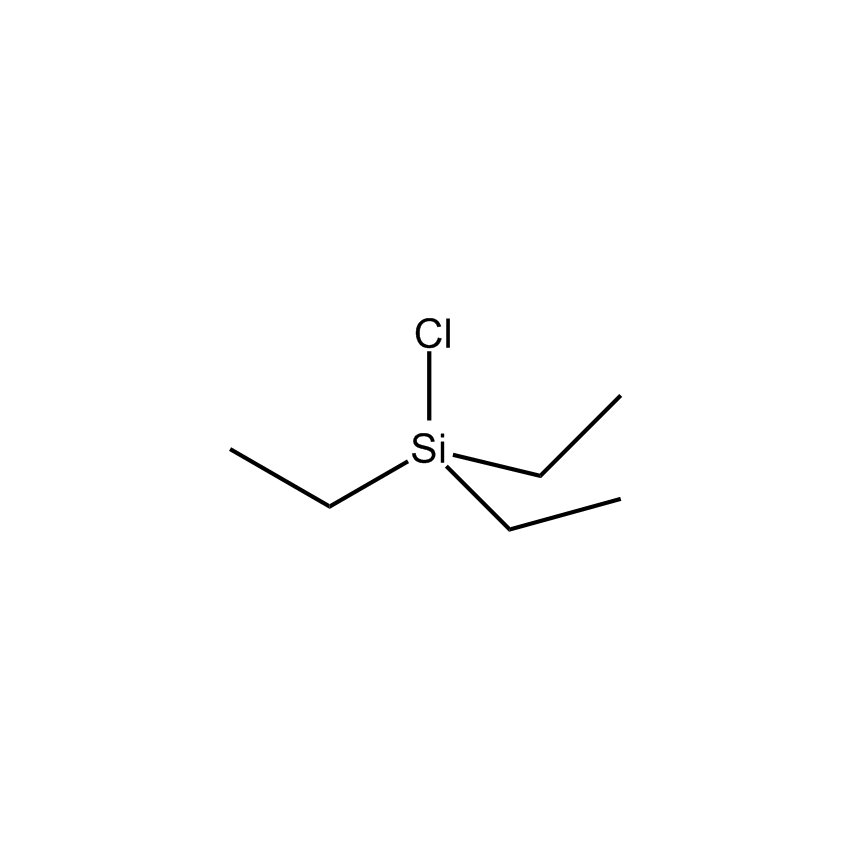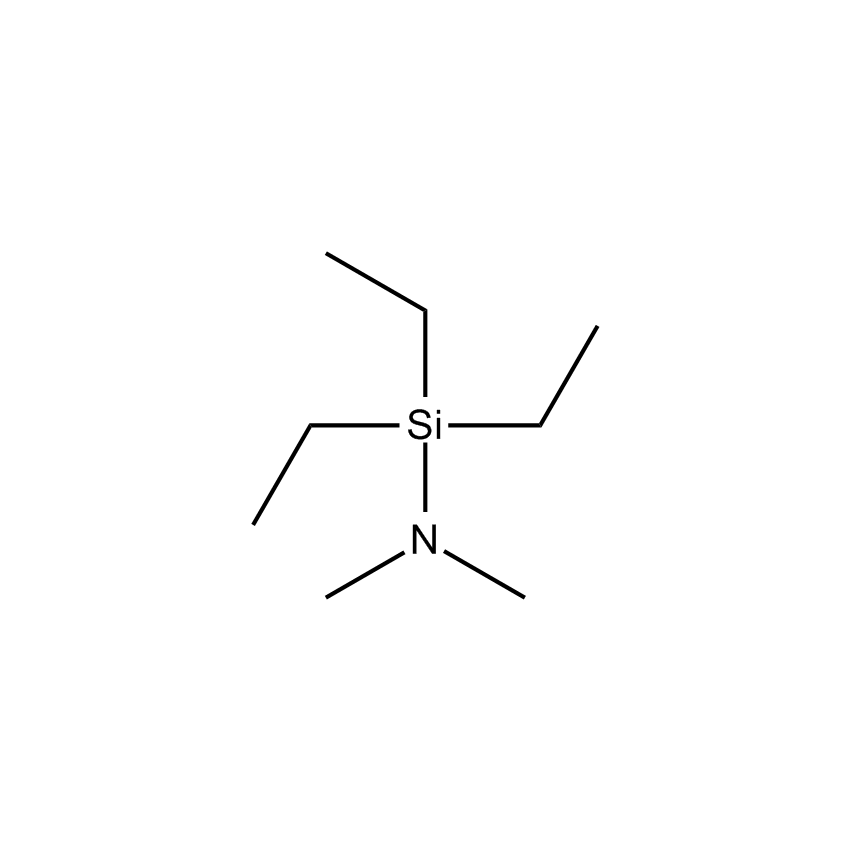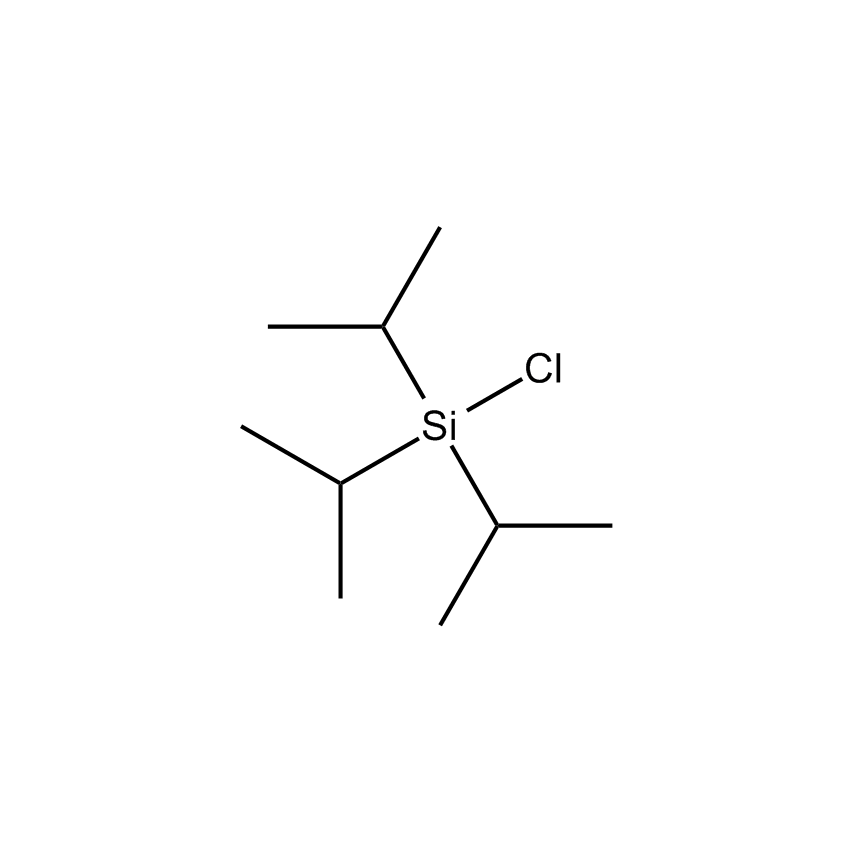Additional Properties
- Einecs Number 213-615-6
- HMIS 3-3-1-X
- Molecular Formula C6H15ClSi
- Molecular Weight (g/mol) 150.72
- Purity (%) 97%
- TSCA Yes
- Delta H Vaporization (kJ/mol) 9.8 kcal/mole
- Autoignition Temp (˚C) 280
- Boiling Point (˚C/mmHg) 144-145
- Density (g/mL) 0.8968
- Flash Point (˚C) 30 °C
- Melting Point (˚C) -50°
- Refractive Index @ 20˚C 1.4313
Application
Forms silylated derivatives of alcohols stable to Grignard conditions.1
Reference
1. Arkles, B. In Handbook of Grignard Reagents; Silverman, G., Ed; Marcel Dekker: 1996; p667.
Safety
Trialkylsilyl Blocking Agent
Used as a protecting group for reactive hydrogens in alcohols, amines, thiols, and carboxylic acids. Organosilanes are hydrogen-like, can be introduced in high yield, and can be removed under selective conditions. They are stable over a wide range of reaction conditions and can be removed in the presence of other functional groups, including other protecting groups. The tolerance of silylated alcohols to chemical transformations summary is presented in Table 1 of the Silicon-Based Blocking Agents brochure.
Triethylchlorosilane; Chlorotriethylsilane; TES-Cl




